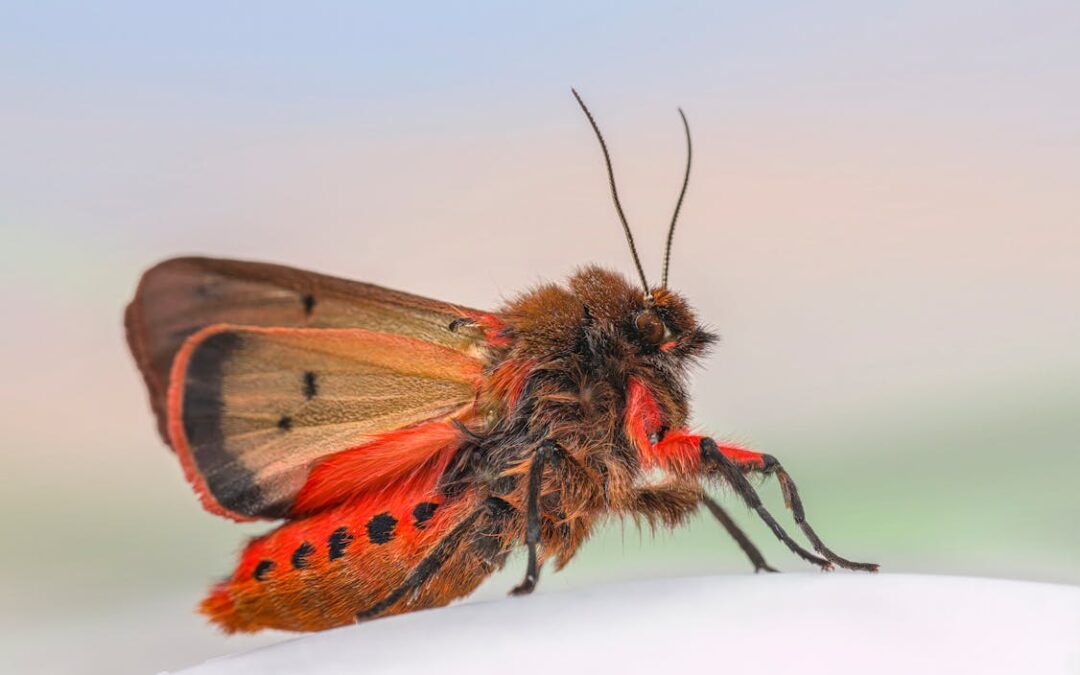Moths are common household pests that can cause damage to clothes, pantry items, and other fabrics. Understanding their life cycle, the different species you might encounter, and effective moth pest control methods can help you prevent an infestation and keep your belongings safe.
The Moth Life Cycle and Food Sources
Moths go through a complete metamorphosis, meaning they have four distinct stages in their life cycle: egg, larva (caterpillar), pupa, and adult moth. It’s the moth larvae that cause the most damage, as they feed on natural fibers like wool, silk, and grains. Different species of moths target different food sources. Clothes moths, for example, prefer natural fabrics like wool and cashmere, while pantry moths, such as Indian meal moths, are drawn to grains, cereals, dried fruits, and pet food.
Signs of a Moth Infestation
Several signs can indicate a moth infestation in your home. These include:
- The presence of adult moths flying around your house, particularly at night near lights.
- Small holes in your clothes, carpets, or upholstery.
- Tiny white casings, which are moth pupae, on fabrics or carpets.
- Webbing in closets, pantries, or on food containers.
- The presence of moth larvae, which are small, worm-like creatures, in your pantry or on fabrics.
Moth Control Methods
There are several ways to tackle a moth infestation and prevent future problems. Here’s a two-pronged approach:
- Moth Treatment:
- Focus on elimination: This involves getting rid of adult moths, eggs, larvae, and pupae. Wash or dry clean infested clothes on high heat to kill eggs and larvae. Discard infested pantry items and clean shelves and cupboards thoroughly with soapy water. You can also use a vacuum cleaner with attachments to remove moth eggs and larvae from carpets, furniture, and cracks and crevices.
- Chemical control: In cases of a severe infestation, consider using moth traps with pheromones that attract and trap adult moths. Chemical sprays or moth strips can also be used, but follow the instructions carefully and prioritize non-chemical methods whenever possible, especially in areas with food or clothing.
- Prevent Moths:
- Eliminate food sources: Store dry food items in airtight containers. Wash out containers before refilling them. Avoid leaving out pet food for long periods.
- Wash clothes before storage: Wash or dry clean clothes before storing them, especially seasonal items. This will eliminate any eggs or larvae that may be present.
- Store clothes properly: Use airtight containers or cedar chests for long-term clothing storage. Cedar repels moths naturally.
- Regular cleaning: Vacuum carpets, furniture, and cracks and crevices regularly to remove potential moth habitats.
Professional Pest Control
If you’re dealing with a significant moth infestation or are struggling to control it yourself, consider contacting a professional pest control company. They can assess the situation, identify the specific species of moth, and recommend a tailored treatment plan that may include chemical applications or alternative methods.
By understanding the different species of moths, their life cycle, and the various moth control methods available, you can keep your home moth-free and protect your belongings.Important Note: Always prioritize non-chemical methods of moth pest control, especially in areas where you store food or clothing. If you choose to use chemical products, follow the instructions carefully and prioritize safety.

